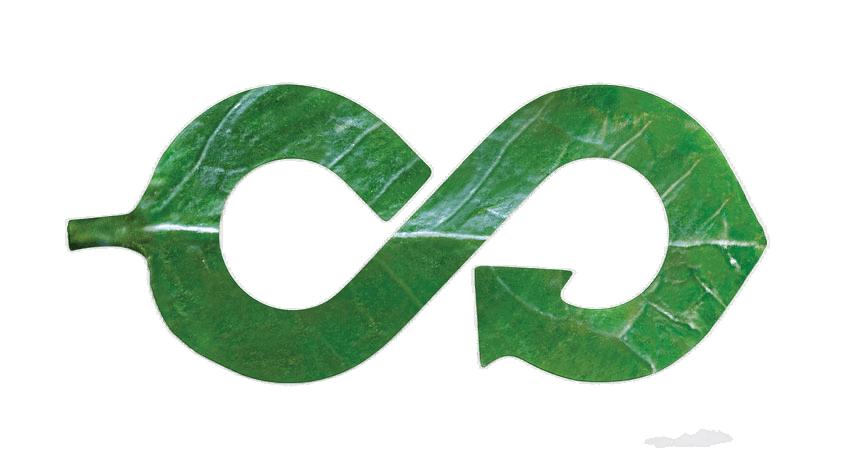
5 minute read
CIRCULAR ECONOMY FOR CLIMATE SECURITY
Hyosung’s business portfolio today covers many industries, including textiles, energy, chemicals and industrial materials. However, Hyosung’s roots go back to making nylon and polyester yarns since the 1960s and 70s. Based on this technology, the applications have expanded into tire cords, carpets, films, airbags, and seat belts, to name just a few. As a result, most of the recycling program at Hyosung revolves around reusing pre-consumer and post-consumer nylon and polyester.

Advertisement
In terms of mechanical recycling, Hyosung produces most of its nylon and polyester products using pre-consumer waste. With post-consumer waste, it makes mechanically recycled polyester products. Chemical recycling is much more difficult because, unlike mechanical recycling, which uses uncontaminated “clean” waste, chemical recycling breaks down and filters out the “dirty” waste to obtain the original raw material.
Recycled Fibres
Today, there are many technologies for recycling that are available in the market. But are they selling well? Unfortunately, the answer is no. At least not as fast as we would like them to, because the demand is not out there yet. Among Hyosung’s recycled products, one item that sells very well is the recycled PET yarn called “Regen”, an abbreviation for re-generated fibre.
So, in the end, recycled products are already readily available, but if consumers and end-product makers do not choose to buy these products, our transition into a circular economy will not be achieved as fast as we would like.
However, its supply is restricted by the amount of PET bottle waste that can be sourced in the market. Apparel brands use Regen to market their polyester clothing line as 100 per cent recycled because the increased costs are minimal compared to the benefits they get from increased brand recognition. Regen costs 15 to 20 per cent more than non-recycled yarn, but if you consider the fact that raw materials only account for only around 20 per cent of total clothing manufacturing costs, the effect is minimal.
There are other products like recycled spandex. They have been available for the last 3 to 4 years, but the demand is very small. This is because spandex fibre only accounts for 10 per cent of the fibres used to make clothing. Apparel brands can’t market their products as eco-friendly with such little use, so they are not incentivised to change their use of spandex fibre to recycled spandex. So, in the end, recycled products are already readily available, but if consumers and end-product makers do not choose to buy these products, our transition into a circular economy will not be achieved as fast as we would like. Accordingly, policymakers worldwide must devise schemes such as subsidy and incentive plans so that consumers and end-product producers choose eco-friendly products.
Hydrogen In The Circular Economy
Another area of a circular economy that Hyosung takes part in is the use of hydrogen by-product that is generated in the process of making polypropylene, the material that is used to make thermoplastics such as pipes and protective films. Around 13,000 tons of hydrogen gas are generated every year. Hyosung is building a plant in a 50:50 joint venture with Linde of Germany to liquefy this gas and inject it back into the economy as a fuel for hydrogen cars via liquid hydrogen refuelling stations that are being built across Korea.
All hydrogen consumed today in Korea is supplied in the form of gas. However, without a vast network of dedicated pipelines for hydrogen, liquid hydrogen is more economical to transport than hydrogen gas. This is because the density of liquid hydrogen is only 1/800 of hydrogen gas. So, you can transport 13 times more liquid than gas. Yes, it does cost more because you must add a process for the liquefaction and maintain it at -253 , but the cost savings in transportation offset and provide higher returns than selling hydrogen gas. A sector that requires more hydrogen is commercial trucking and buses, which in future could be expanded to include trains and the aviation industry also.
Hyosung’s approach to hydrogen is integrating the value chain to enhance effi ciencies and costs. For example, we produce our nylon and PET chips to make various downstream products, including yarns, tire cords and other industrial materials. Such a comprehensive approach is especially critical for businesses like hydrogen because it reduces the risk of finding downstream customers to offtake your electricity and hydrogen.
Making Hydrogen Affordable
We know how to make hydrogen, we know how to transport them, and we know how to make the applications for hydrogen. But the problem is, can we do it economically? The technological challenges lie in finding cheaper and more efficient ways to make and use hydrogen. Government subsidy will be the most important factor in making hydrogen affordable.
Hydrogen is an expensive fuel to make and supply. The basic rationale behind the economics of hydrogen is that it will become cheaper to produce as more and more electrolysers are supplied to the market to drive down their manufacturing costs. According to Bloomberg New Energy Finance, the price of green hydrogen in Korea is expected to drop from $7.85 in 2022 to $2.47 in 2030 and $1.43 by 2050.
The worrying fact is that the demand for hydrogen is not growing as fast as we would like it to. We already see deviations from initial government plans to deploy hydrogen demand. In the case of Korea, the government wanted to have 65,000 hydrogen cars running in the streets by the end of this year. But as of the end of
October, the number is only 27,870, or 43 per cent of the government’s plan.So, why is this? The government will subsidise consumers to buy hydrogen cars. In Korea, a hydrogen Hyundai Nexo SUV would cost about $57,000. The government subsidises 46 per cent of the car, allowing consumers to buy it at around $31,000, about the price of a comparable mid-sized Hyundai Sante Fe SUV. Hydrogen fuel prices are kept low at a de facto fixed price of $7.00 per kilogram. In terms of mileage, this equates to 9.5 cents per kilometre for hydrogen cars, compared to 10.6 cents for diesel and 11.0 cents for gasoline.
But consumers complain that there are not enough hydrogen refuelling stations out there for them to access. Hydrogen suppliers complain there aren’t enough hydrogen vehicles to make their businesses viable. So, this becomes a classic dilemma of “which comes first – the chicken or the egg?” For hydrogen suppliers, the average loss incurred by hydrogen refuelling stations for passenger vehicles in Korea was about $76,000. The government compensated around 61 per cent of the losses.
However, actual losses covered were only around 40 per cent when you factor in the 50 per cent of the facilities costs that the government did not subsidise. So, until hydrogen demand becomes sufficiently large and prices cheap, only enough government subsidies can keep hydrogen affordable for consumers and producers to make and supply. You do not need to lower the temperature of hydrogen to -273 to transport it through pipelines in the gaseous form.
You have to lower it to that temperature when you want to liquefy hydrogen so that you can transport more of it in a tank lorry. If you have a vast network of pipelines in a country dedicated to transporting hydrogen, you don’t need to liquefy it. But if you don’t, liquid hydrogen is the next best answer to transporting mass amounts of hydrogen through tank containers. Sort of a bridge technology before you set up a whole vast network of pipelines.
The key lies in making hydrogen cheap to produce so that people and industries will use it as an alternative to fossil fuels. But to do that, you have to create and sustain demand for hydrogen so that it can be produced at a large scale to bring down the costs. Remember, the whole idea behind the price of green hydrogen falling to around $1.00/kg levels by 2050 lies mainly in the assumption that electrolyser capital costs fall dramatically over the period as more electrolysers are manufactured to serve hydrogen demand. But how will more electrolysers be manufactured if you don’t have and expand the demand for hydrogen? Sadly, the reality is that the demand for hydrogen as of now is very low. This is because hydrogen is not a cheap fuel over existing fossil fuels. Like renewable energy, the only way we can generate and expand its demand in the initial stages until it becomes cheap enough is by providing incentives through government subsidies to compete with fossil fuels.









